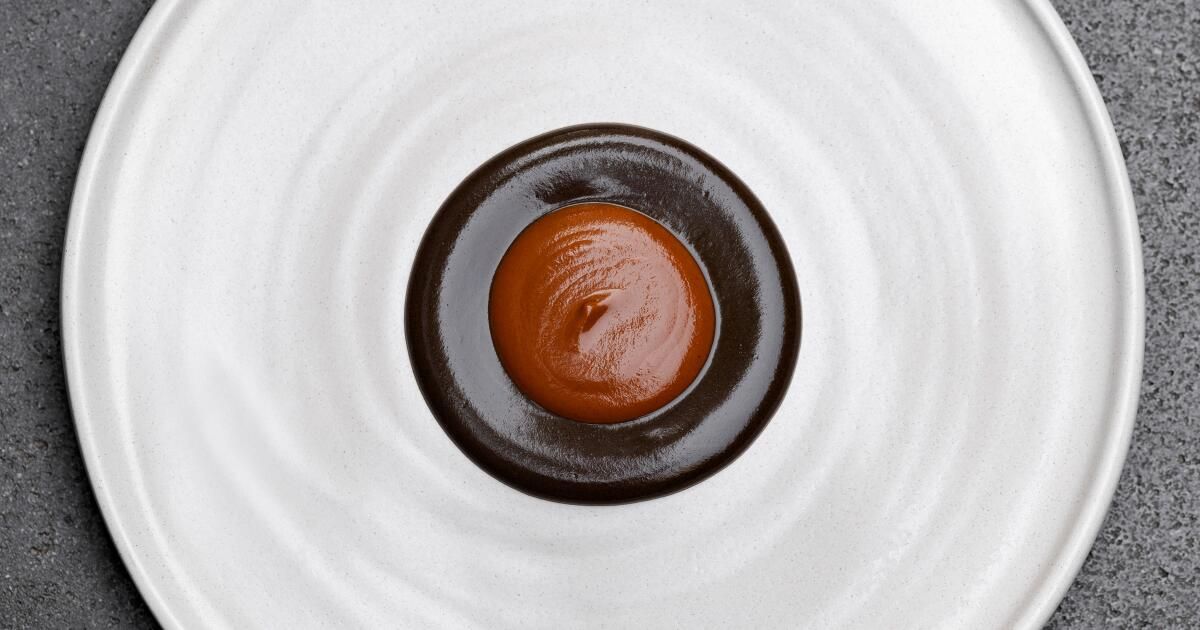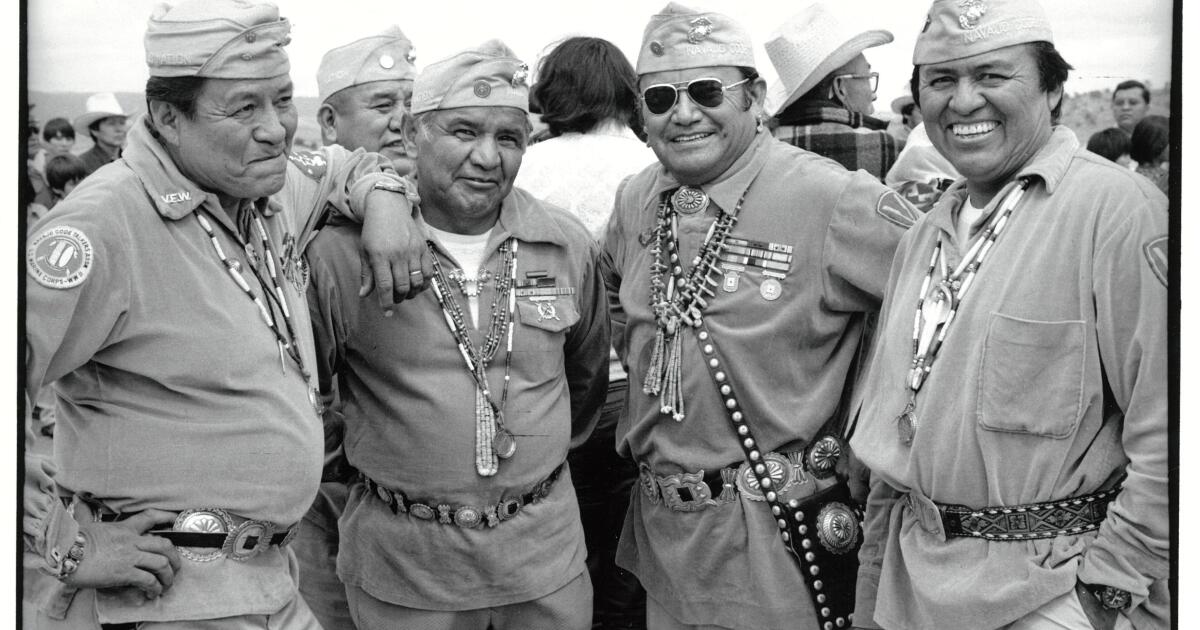For me, Mole has always been personal. It is a bridge for my family, my memories and for Mexico. But lately, he has also become a politician. In recent months, as the Trump administration has rushed any claim to humanity in the way in which the United States treats immigrants, I have been thinking about how culture itself can be criminalized, monitored, restricted and erased.
So, when I heard that Pujol, the restaurant of Mexico City with Michelin stars by Enrique Olvera, was bringing a emerging window, and his famous mole, to Los Angeles, knew he had to go. I was not hungry only as a mole, but for my people, our culture, to be seen, even celebrated.
Ten kitchen and waiters traveled to the Damian de Olvera's restaurant Damian for the event. That detail hit me hard due to the risks to cross the borders at a time when every Latin who enters the United States, regardless of how or why or with what legal status, is suspicious. Even within the United States, the border follows you. The message is clear: perceived strangers are not reliably predetermined.
Still came the chefs and pujol servers, and brought with them the Lunar de Olvera crazy – A mole in constant aging that has been developed (almost like a fermented mass initiator) for 10 full years. Some call it iconic. But as Olvera says, “we are not trying to do the best mole, only ours.”
That is the heart. Mole is memory, place, family, me.
In the emerging window, I expected them to serve me a moon, he Mole, the mole crazy. Instead, three served us.
The first was a mole Of pot – Meaning, cooked in a clay pot. (I'm used to the term “of the pot“Referring to beans – Beans of the potThick and complete, not puree or refrito). I was surprised to discover that this lunar was not traditional, that is, it was not a salsa poured on meat.
Instead, he covered a tender short rib, more like a dew than a spill. And the taste was deep: dark, smoked, with a chocolate coffee tone, not sweet, but rich and complex. If I had not known that it was a mole, I could have confused it with a sophisticated barbecue glaze. The short rib itself was fat, fork and fork.
The next moon came as a tribute to the “tribute to the square” of the artist Josef Albers, except that this was a composition of nested circles on a red white ceramic plate. In the center there was an adobe-red mole NewI live with brightness and vitality. The lunar crazy He surrounded him, as his name suggested, as a mother cradling her son, a culinary Pietà. Hand written in pen, the menu noticed the mole crazy He had been aged for 3,676 days. The color was a deep and dark brown, like the cortex of an ancient oak after a storm, earthly and noble. The colors reflected not only the depth of the dish but also the Los Angeles palette, its temporary home.
And it served without protein. Suddenly, the richness of the short rib in the previous course made sense: the need to sincere, allowing this dish to be kept alone.
I picked up an outward tortilla towards the edge of the plate, from the youngest mole to the crazy mole. The first bite was animated, spicy and brilliant, already better than almost any mole he had. Then the mole crazy : thicker, more like the pudding than the sauce, reminiscent of the dense Spanish hot chocolate served with churros.
He had the presence and severity of the mountains of San Gabriel, which rose sharply from sea level to 10,000 feet. Like these mountains they catch the light (pink, orange, purple, this mole revealed layers of spices and complexity. Not only had it depth; it had archaeological and geological depth.
And yet, I had to laugh. It was good that I had not brought my mother or my aunts To the emerging window. As transcendent as the dish was, they would have said: And the meat?
When we ask how the lunar evolves, our waiter explained that the ingredients change with the stations. Before coming to Los Angeles, the chefs had added guava, apples and pears.
Excited, I asked: “What will you add while you are in Los Angeles?”
The waiter smiled. “We have no plans to add anything.”
But I wanted them to do it. I wanted angels to give the Topo something in return: a gesture of reciprocity. When my family visits from Mexico, they bring raw cheeses, dry shrimp, Artesenal Sweet bread, Art of accounts made by Huichol. We reommors with the SEE candies boxes, Dodger Gear, Sock-off design pastes from the alleys.
Could not chefs recover something? A flavor? A symbol? Something to mark that they were not only visitors, but family Returning to the ancestral ground here in Los Angeles, a city that was once part of Mexico?
I thought about the locates in season, sweet and floral, which grew in rear courtyards in Los Angeles, so delicate that they cannot be sold in the markets. They would have the perfect local accent. I thought about the sour cherry juice of a georgian mass ball house in Glendale, its acidity would add a contrast to the depth of the mole. I thought of David Masumoto, the American Japanese farmer in the Central Valley whose family was imprisoned during World War II but whose peaches still bloom.
Then I remembered the orange flowers, flourishing in Huntington in San Marino. I am writing a book about the gardens of Huntington, and I know that these trees once had fruits collected and full of Mexican workers, 100 years ago. The Topo Pujol, I realized, could contain a memory, just as those trees do. The oranges and mole Mother – They would form a kind of culinary Latinity, A genealogical and territorial fusion through food.
I turned to the waiter and said: “Please carry our oranges with you. They are a link through miles, generations. They belong to your mole.”
He promised to transmit the message to the chefs.
He had come to try a legendary dish, to be sure. But in the taste, I was surprised how precarious everything feels at this time. I found myself yearning to convey how deeply the Mexican and the American are still connected, people with people, people to peopleNo matter what the government says in Washington.
Each mole carries a story, even if you don't win Michelin stars. History knows about a living and evolving story. And I want that story to shine.
Natalia Molina is a professor of American studies and ethnicities at the USC. His last book is “A place in the Nayarit: how a Mexican restaurant fed a community.”












